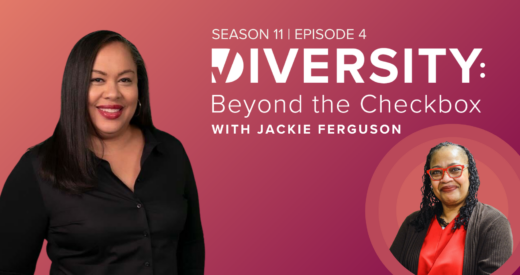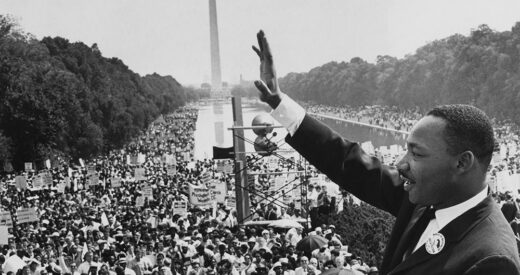5 Steps to Create Diverse and Effective Ad Campaigns
Finely tuned marketing strategy is dependent on demographic analysis. What do we always say in marketing? Know your audience. Yet, despite its essential role in reaching audiences, keeping up with rapidly changing demographics is getting more difficult. Marketers cannot ignore these shifts if they want to connect with consumers and build brand loyalty.
Even savvy marketers can be challenged to stay current as America’s population becomes increasingly diverse. Younger generations are more culturally mixed and socially conscious than previous generations. As a result, organizations need to adapt their marketing strategies to connect with these new consumers and potential employees. However, the U.S. population is also aging. To reach both of these audiences, marketers must stay in touch with the needs and expectations of broader consumer groups.
The most effective strategy is an inclusive marketing approach that brings diverse voices into the creative process. Unlike older methods that targeted specific groups or simply included one or two diverse actors, inclusive marketing elevates the stories of many different kinds of consumers.
Today’s consumers want brands to portray them authentically. They also want the companies they patronize to live up to diversity, equity, and inclusion (DEI) values.

Demographic trends
The following statistics provide a snapshot of current U.S. demographics, where we’re headed, and how quickly the population is changing:
- U.S. Census data project that by 2030, the non-Hispanic White population is expected to fall to 55.8%, while the percentage of residents who are Black, Hispanic, or Asian American is projected to grow significantly.
- Generation Z (born between the mid-1990s and early 2010s) is leading America’s changing racial and ethnic makeup. According to The Pew Research Center, Gen Z is more racially and ethnically diverse than any previous generation. Slightly more than half (52%) are non-Hispanic White, 25% are Hispanic, 14% are Black, 6% are Asian, and 5% are some other race or two or more races. Gen Z is projected to become majority non-White by 2026.
- The fastest-growing racial or ethnic group according to Census Bureau projections is those who are biracial or multiracial (projected to grow 200% by 2060).
- People who are Hispanic and those who report they are “Two or More Races” are relatively young. The high growth rate is primarily attributed to natural increase. For Asians, the growth projection is based on immigration. By 2030, immigration is projected to be the largest driver of U.S. population growth.
- Overall, the U.S. population is getting older. In 2020, those under 18 (74.1 million) exceeded the number 65 and older (56.4 million). However, by 2030, the size of the two groups will be roughly equal.
- According to the CDC, one in four U.S. adults, some 61 million people, live with some type of disability. Of those age 65 and older, two in five (40%) have a disability.
- In 2021, Gallup found that 7.1% of U.S. adults identify as Lesbian, Gay, Bisexual, Transgender, or some identification other than heterosexual.
5 key strategies for inclusive marketing
Organizations that fail to adopt an inclusive marketing approach are bound to be left behind. Multicultural consumers account for nearly 40% of the U.S. population, but multicultural media spending is only 5.2% of total advertising and marketing spend.

Adopting an inclusive marketing strategy means integrating DEI into all aspects of the business, including brand strategy, content marketing, and messaging. This holistic approach leads to stronger brand authenticity and trust, loyalty of employees and customers, and a better ability to reach new audiences. Clear evidence shows that consumers are more likely to trust brands that showcase diversity in ads, while viewers find inclusive advertising more memorable.
To create authentic and inclusive marketing strategies, organizations should start with the creative process. Here are five ways to integrate DEI from the beginning:
- Build a marketing team that is diverse and multicultural. Even if your creative team is homogenous, you can ask culturally diverse employees from other departments to review your campaign mockups.
- Develop and follow an inclusive editorial style guide. By using inclusive language and being intentional about the words you select, you can convey respect for all people.
- Create branding and advertising campaigns that authentically reflect the diverse communities you serve. For example, avoid using images of “older” consumers who are actually younger models with prematurely gray hair.
- Ensure your content, especially your digital content, is accessible. Designing for accessibility is one crucial but often overlooked step.
- Thoughtfully consider what social action causes your company will support through financial and in-kind contributions and employee volunteerism. These intentional actions can deepen connections with communities, build feelings of belonging, and influence positive social change.
As you develop your inclusive marketing strategy, remember to consider not only how your company views the marketplace, but also how your employees, customers, and potential customers perceive your company. Recognize that your employees, customers, and prospects – especially, younger, more diverse individuals – are increasingly demanding that companies act on the values of diversity, equity, and inclusion and exhibit authentic branding.
It is time to say goodbye to the outdated approach of target marketing to “minority groups.” The percentage of multiracial or multicultural people who are currently underrepresented in marketing, advertising, and media will continue to grow – eventually becoming the majority. In a few short decades, what we now call “inclusive marketing” will simply be “marketing.”
Wondering where your organization’s marketing ranks for DEI best practices? Take our free, 12-point marketing assessment. In return, you’ll be rewarded with a clear sense of priorities, and we’ll send you additional inclusive marketing resources with tips you can put to use right away.
Allison Bennett, CDE is a marketing campaign specialist at The Diversity Movement. She recently received Marketing Brew’s inaugural Go Getter award, highlighting up and coming talent in the marketing industry. Connect with her on Linkedin.







